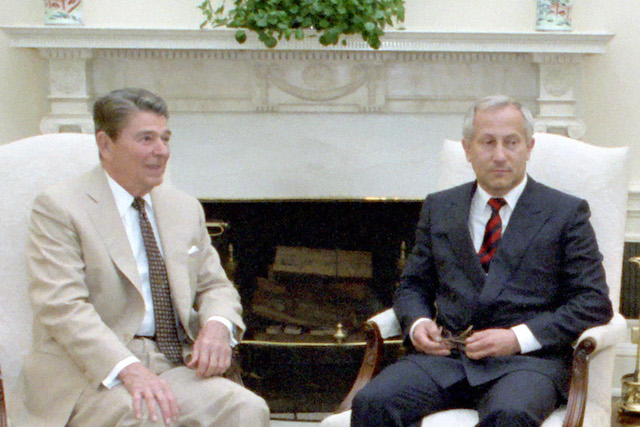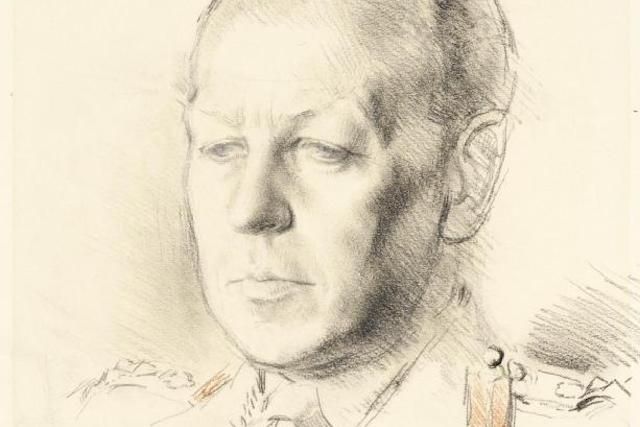As of 2019, the British foreign intelligence agency, MI6, is seeking new hires. The name MI6 originated during World War II, when foreign intelligence was the sixth division of British military intelligence. Agent Alex Younger says that the most important qualities for a job candidate to possess are empathy and intelligence. Of course, MI6’s most famous fictitious agent, James Bond, arguably possesses more ego than empathy. As these real life examples show, though, an MI6 agent needs a bit of Bond’s daring as well.
10. Fitzroy Maclean’s Kidnapping Mission

During Fitzroy Maclean’s life, the press often wrongly claimed he was the inspiration for James Bond, the dashing MI6 spy who is the hero of Ian Fleming’s novels. Maclean denied any association with Bond, and events from Fleming’s life support his denial. Fleming’s biographer, Andrew Lyncett, claims Fleming and Maclean were no longer friends by the time Fleming wrote his first Bond novel. While Fleming was working for The Sunday Times, he declined to serialize one of Maclean’s books in the paper, bluntly stating he detested it. Their friendship never recovered.
Maclean may not have been the inspiration for Bond, but his operations were worthy of the daring agent. In 1942, Mclean was sent on a special assignment in Iran, then called Persia. Since the British had not fulfilled their promise of granting independence to Arab and Persian countries after World War I, Persia and other countries considered allying with the Axis Powers during World War II. Maclean and his men were sent to Persia to monitor General Fazollah Zahedi, head of the Isfahan Division of the Persian military, because Zahedi was suspected to be planning a rebellion amongst his troops — a rebellion backed by Axis forces.
Maclean and his men secretly held Zahedi at gunpoint and kidnapped him from his home.They flew him to Palestine, then still owned by the British. (Zahedi returned to Persia in 1945, and he would later support Shah Pahlavi’s claim to the throne during the Iranian Revolution.) Though his exploits were impressive, Maclean was a modest man. He dryly said of his friend and fellow operative, David Stirling, “David Stirling’s driving was the most dangerous thing in World War II!”
9. William “Biffy” Dunderdale Smuggles The Enigma Machine
Mathematician Alan Turing deciphered the codes for Enigma, a cipher machine used by the German military during World War II. Some historians estimate that Turing’s ability to intercept and decode messages from Enigma may have shortened the war by four years. However, Turing would not have ever possessed the copies of the machine that enabled him to decipher its codes without the help of William “Biffy” Dunderdale.
Another possible model for James Bond, Dunderdale was MI6’s liaison to the Polish and the French during World War II. The Polish gave Dunderdale the first code for interpreting messages from Enigma. When the Germans realized the British possessed such valuable military intelligence, the Germans started changing the code daily. Turing was hired to find a reliable method for decoding messages sent via Enigma. Dunderdale covertly smuggled Polish replicas of the Enigma machine and delivered them to Turing’s research lab in Bletchley Park.
8. Michael Mason Assassinates His Hitmen

The last possible model for James Bond on this list, Michael Mason was a boxer and fur trapper who worked covert missions in Germany and Romania. Mason spent his childhood living the wealthy lifestyle James Bond embodied, a lifestyle he rejected when he fled to Canada as a teenager. Some of his missions in Germany failed, but he isn’t noteworthy for his association with any particular MI6 operation.
Rather, Mason was famous (or infamous, depending on one’s opinion) for quickly and ruthlessly killing those he believed were sent to assassinate him. MI6 claims none of its operations are assassinations. Mason, however, never denied it was part of his own work. Mason did not deny killing men, but he had an honor code. He claimed he never killed anyone who had not tried to kill him first.
7. Oleg Gordievsky’s Escape

Oleg Gordievsky’s escape from Moscow is one of MI6’s most noteworthy operations. In 1982, he was posted to the Russian Embassy in London, where he served as one of Britain’s most valuable covert sources of KGB intelligence during the Cold War. Gordievsky’s cover was supposedly compromised by a double agent from the CIA, who slipped a truth serum into his drink. He was summoned to Moscow for interrogation. Gordievsky knew that if he didn’t escape Moscow, the Russian government would kill him.
MI6 instructed Gordievsky to enact the escape plan he had long kept hidden in a copy of Shakespeare’s sonnets. Outside, he met a man carrying a Harrod’s bag and eating a Mars bar — the agent MI6 had said would help him escape. He took the Harrod’s bag. It would identify him as a British agent, so that other British agents would recognize him as an ally. Following the man’s instructions, he took a train to Leningrad, then boarded a bus bound for the Russia-Finland border. He hid behind some bushes until he saw he saw two men in a Ford car stop in front of his hiding place. One got out and opened the car trunk, signaling Gordievsky that this was his ride. He climbed into the trunk of the car. The two agents wrapped him in space blankets to deflect any infrared surveillance cameras and heat detectors used by Russian security, gave him a tranquilizer pill, and smuggled him to England.
6. Mark Allen’s Legal Kidnapping Plot

As previously noted, MI6 strenuously denies that it plots assassinations. However, MI6 is authorized under British law to murder, torture, or kidnap subjects if the operation is approved by the Secretary of State. According to documents discovered in a now abandoned government office in Libya, MI6 kidnapped two Libyan dissidents and their families in 2004 and relocated them to Tripoli, Lebanon. The kidnappings were part of an agreement between MI6 and Muammar Gaddafi, then dictator of Libya. In exchange for the removal of the dissidents, Gaddafi claimed his country would abandon its development of weapons of mass destruction and allow western companies to conduct oil and gas exploration.
In 2012, lawyers for both kidnapped families filed civil suits against Sir Mark Allen, the former head of counterterrorism at MI6. In both suits, Allen was accused of being complicit in extraordinary rendition, torture, and inhumane and degrading treatment. After a four year investigation, Scotland Yard, the royal police force, stated there were insufficient grounds for charging Allen. The plaintiffs appealed the decision in 2017.
5. MI6 Allegedly Fails To Recruit Russian Spies

Former British intelligence officer Richard Tomlinson alleges that in 1992, shortly after the collapse of the Soviet Union, MI6 started a London news agency called Truefax. The cleverly named Truefax did not contain any true facts at all, because it wasn’t a legitimate news agency.
MI6 established it as a front in an attempt to recruit Russian spies for the British government. Tomlinson claims the newspaper was active for three months, but no intelligence secrets were successfully extracted from the Russians. A russian military analyst confirmed Tomlinson’s account, telling the British newspaper The Guardian that Truefax had attempted to recruit him.
4. Dudley Clarke’s Late Night Visit

During World War II, Lieutenant Colonel Dudley Wrangel Clarke worked for MI6 while based in Cairo, Egypt. He passed false intelligence about the movements of the Allied troops to the Axis Powers. A confident, charismatic man with a stylish fashion aesthetic, Clarke posed as a reporter for the British daily newspaper The Times. Although he was a successful agent, Clarke isn’t best known for his work in Egypt.
One night in 1941, while he was in Madrid, Spain, the police picked him up for what they considered suspicious behavior: dressing in feminine clothes. Desperate not to reveal his identity as an agent, Clarke presented two cover stories. First, he claimed he was a novelist, and he was researching men’s reactions to women’s clothing to more accurately represent them in his novel. Later, he claimed he was delivering the clothes to a female friend, and he decided to put them on as a joke. Both stories were discredited, because the clothes were tailored to flatteringly fit Clarke. Clarke remained in MI6 and continued to work in Egypt, even though his arrest brought unwelcome attention to the agency.
3. The Venlo Disaster

Not all of MI6’s daring operations are successful. In 1939, after Britain had entered World War II by declaring war on Germany, Captain Sigismund Payne Best was assigned to negotiate with Germans who were allegedly plotting to overthrow Adolf Hitler. In fact, these Germans were not plotting to overthrow Hitler. They were recruited by the head of the Nazis’ spy service, Reinhold Heydrich. Heydrich directed his recruits to gather intelligence from the British using their plot as a cover, and he eventually targeted the British agents themselves.
Lured to Venlo, Holland by the promise of meeting a German who was instrumental in the plan to overthrow Hitler, Best and Major Richard Stevens, the passport controller for the Hague, were instead met by several men in a large car, including two who were perched on its roof, holding machine guns and shooting at the car containing the British operatives. Best and Stevens were captured, falsely accused of attempting to assassinate Hitler, and imprisoned in a concentration camp. They survived the war, but their reputations did not.
2. Ecclesiastic, The Suave Seductress

During World War II, a 22-year-old woman living in Lisbon secretly worked for MI6 under the code name Ecclesiastic. Ecclesiastic was the mistress of a German intelligence officer, to whom she passed false information about the success of Germany’s rocket strikes on London.
Ecclesiastic told her lover that the German rockets had demolished Leicester Square and Piccadilly Circus, hoping the misinformation about some of London’s most important landmarks would cause the German military to misdirect its rockets. Ecclesiastic’s supervisor, Klop Ustinov, said Ecclesiastic enjoyed “the game of mobilizing her ample female resources against normal male instincts.”
1. Gareth Williams’ (Possible) Murder
In August 2017, British MI6 agent Gareth Williams was found dead in the apartment he was given for work. His body was placed in a North Face sports bag, and the bag was placed in the bathtub. Though Scotland Yard ruled that Williams’ death was probably an accident, a policeman who was on the scene doubts that conclusion. Detective Chief Inspector Colin Sutton told Buzzfeed that he suspected someone had deliberately tampered with the evidence at the scene. Sutton said there was no DNA on the rim of the bathtub, on the zipper of the sports bag, or on the doorknob of the apartment.
Despite the summer heat, the heater was turned up in Williams’ apartment. Sutton believes that was done in an attempt to accelerate the corpse’s decomposition and prevent police from finding evidence on the body. Williams’ cellphone and laptop were neatly laid out in his living room. Before his death, Williams (a codebreaker) was gathering Russian intelligence for MI6. Given the nature of his work, the cleanliness of the crime scene, and MI6’s 10-day delay in reporting the agent missing, Sutton suspects the crime scene was staged. “It was too clean,” he said. “It was too easy. It was all laid out there on a plate for us.”
U.S. officials confirmed that British intelligence officers were collaborating with U.S. intelligence officers to investigate the possibility that Williams was assassinated by the Russians.